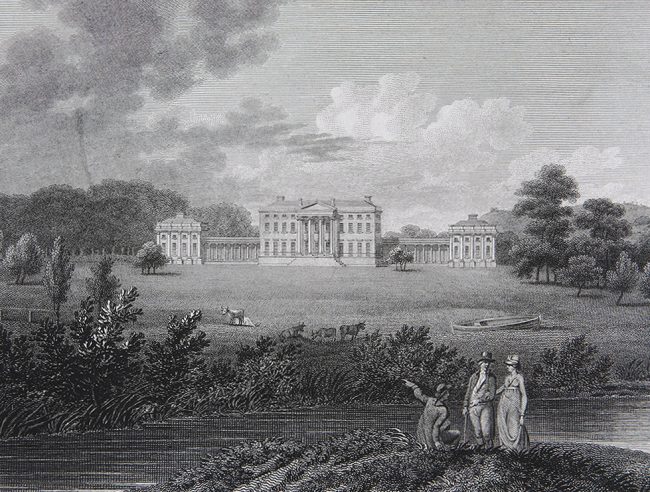
An 1800 engraving of the house from "Angus's Views of Seats." By kind permission of a private collection.
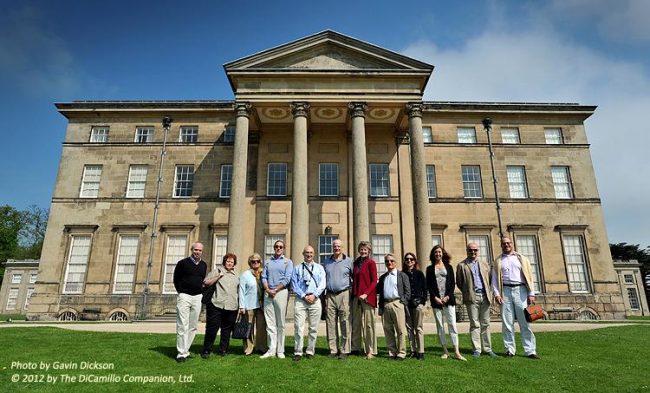
The entrance facade
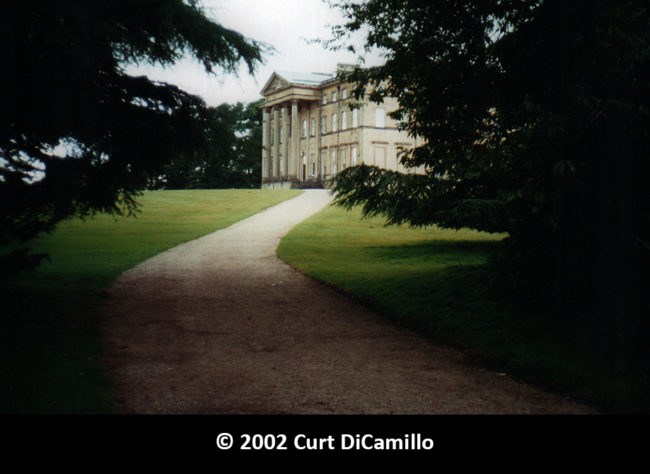
The entrance facade from the drive
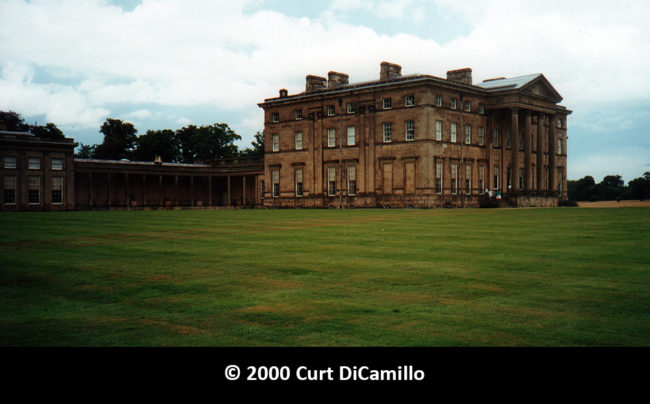
The entrance facade with the west pavilion
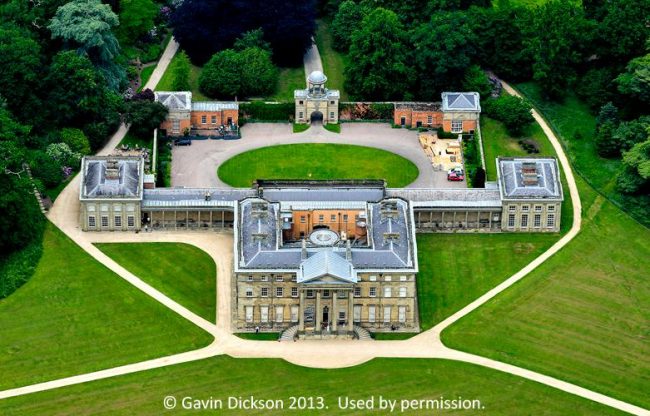
The house and stableblock from the air
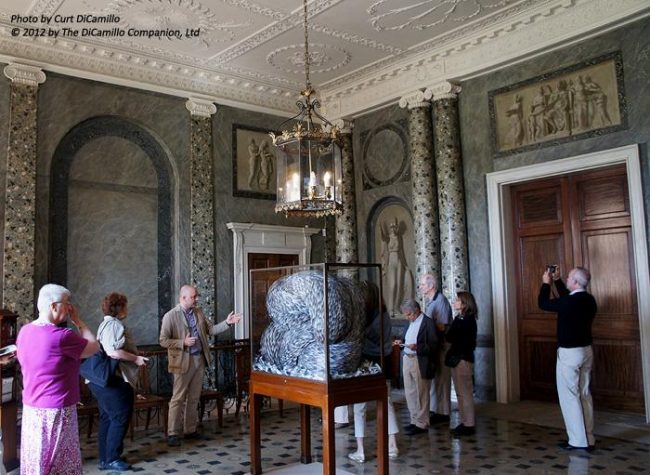
The entrance hall
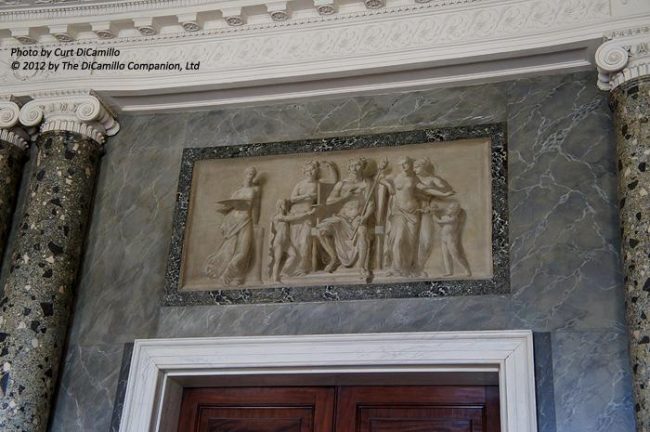
Detail of grisaille overdoor in the entrance hall
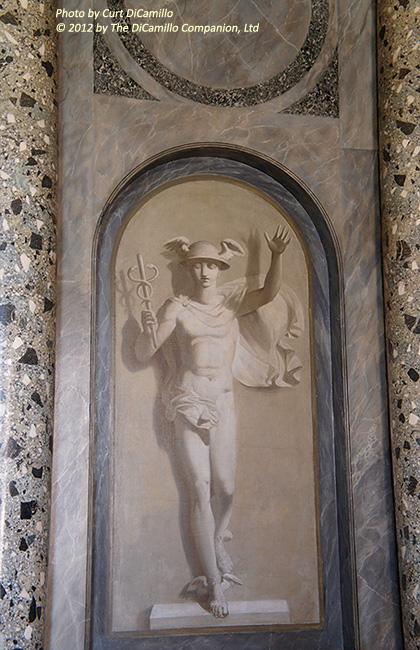
Grisaille painting in entrance hall
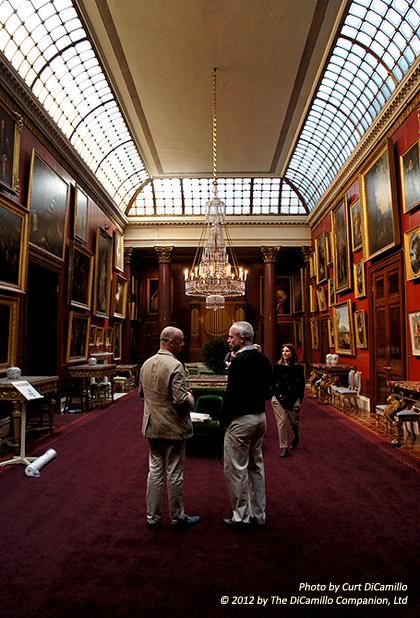
The picture gallery
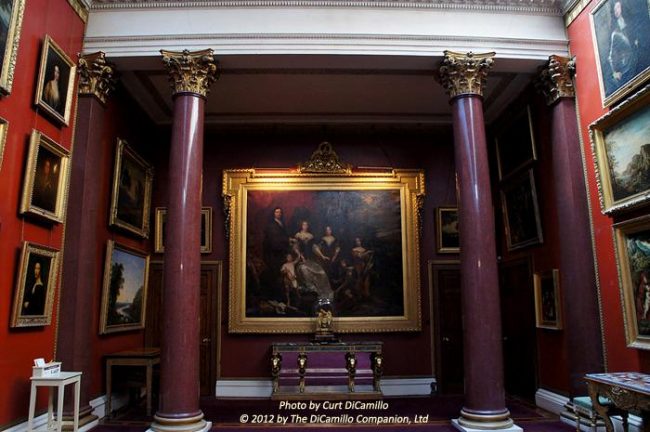
The picture gallery
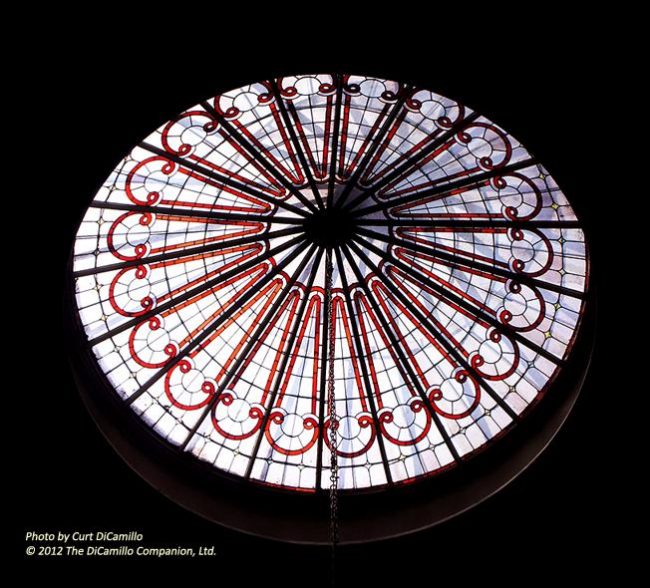
The staircase dome
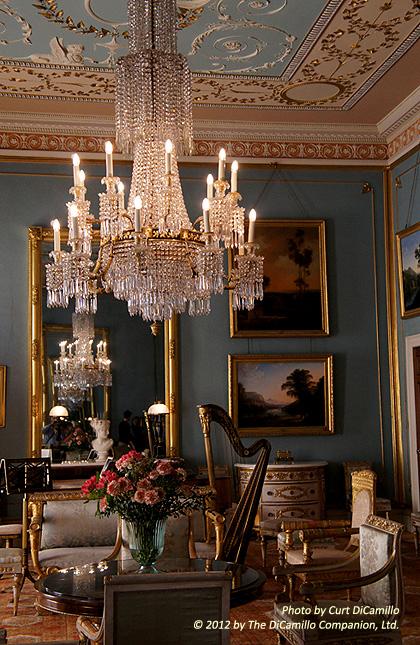
The drawing room
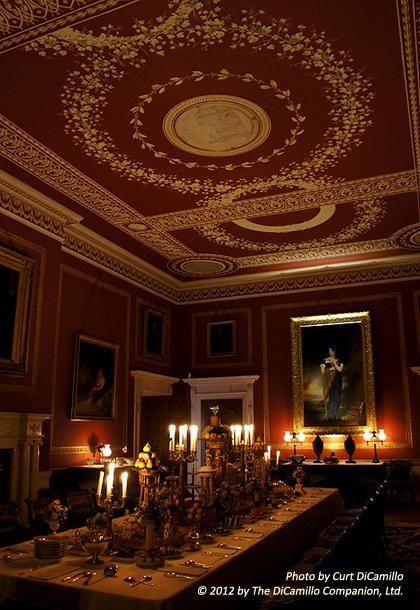
The dining room
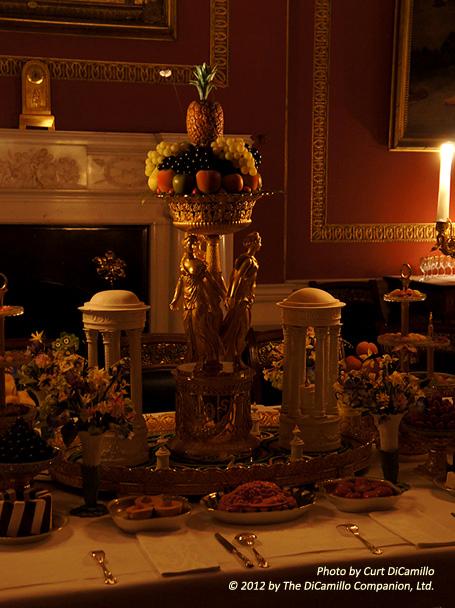
Detail of dining room table
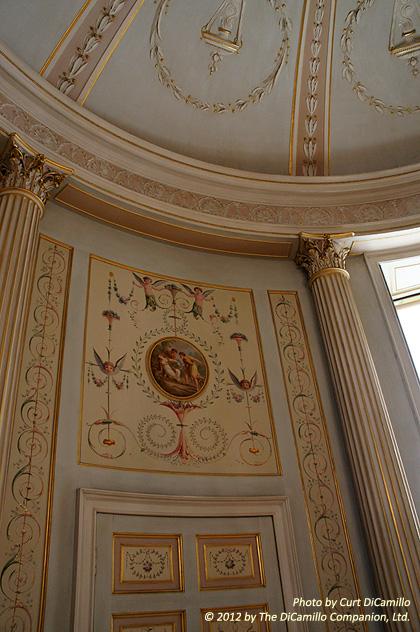
The boudoir
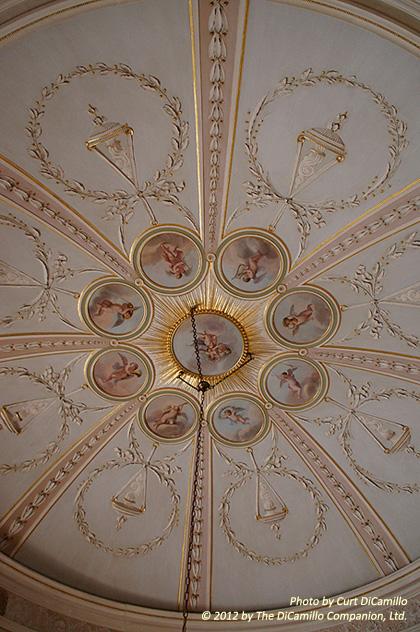
Boudoir ceiling
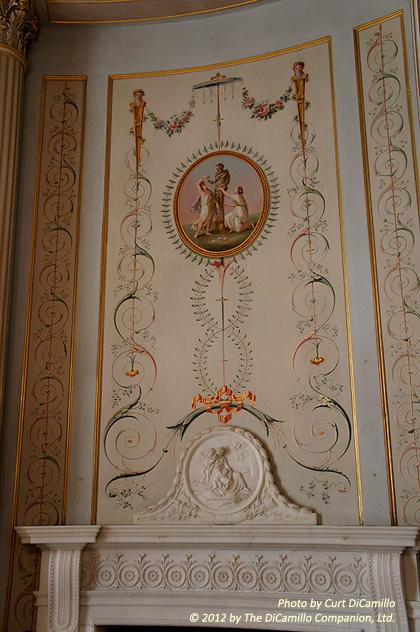
Detail of boudoir fireplace overmantel
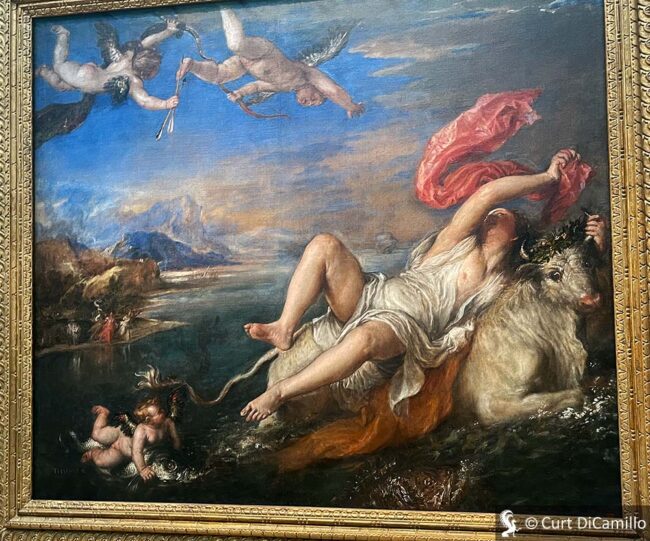
"The Rape of Europa," Titian, circa 1559, today in the collection of the Isabella Stewart Gardner Museum, Boston.
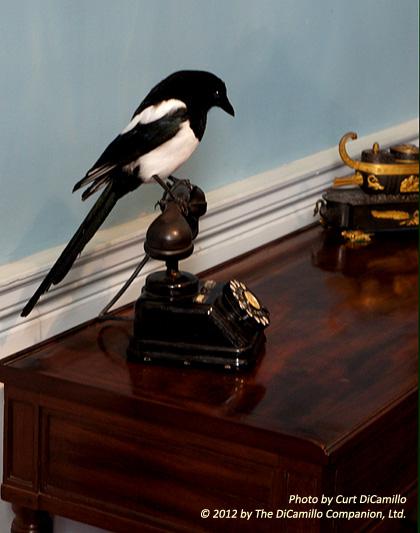
Stuffed bird on phone
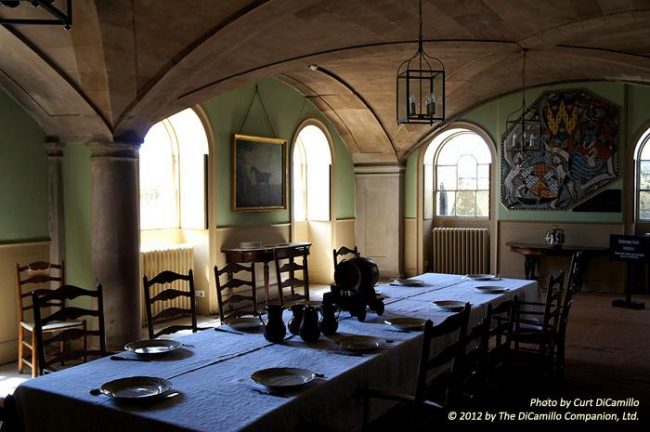
The servants' hall
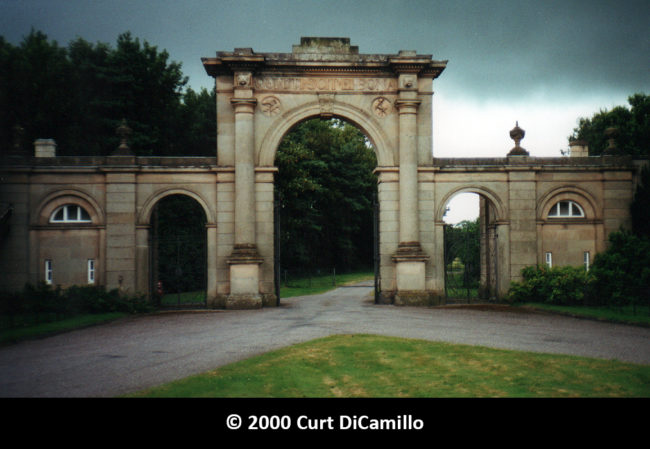
The entrance lodge
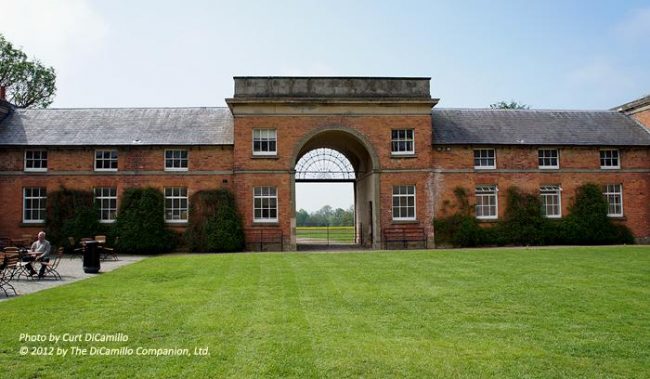
The stableblock
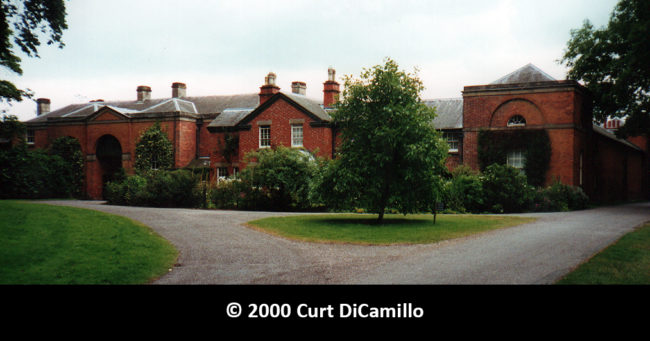
The stableblock
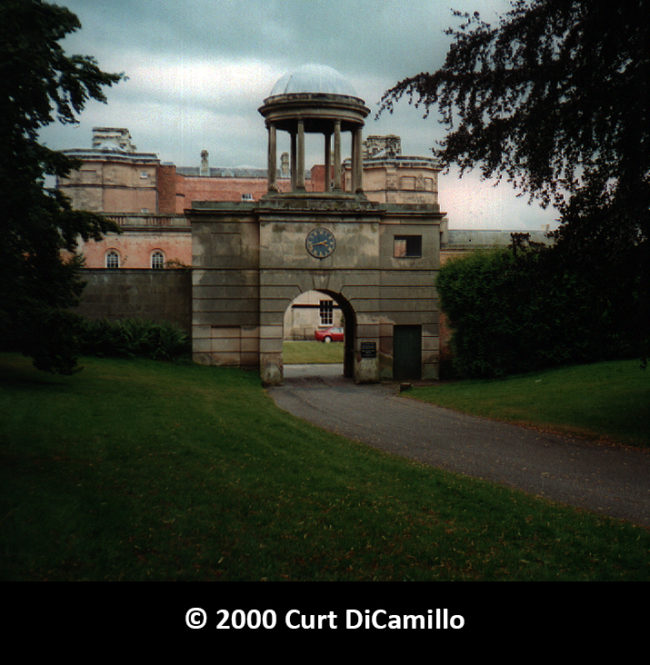
Entrance to the outer courtyard
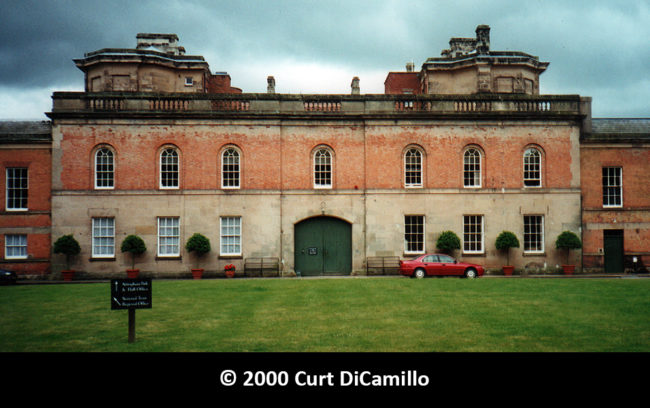
The outer courtyard
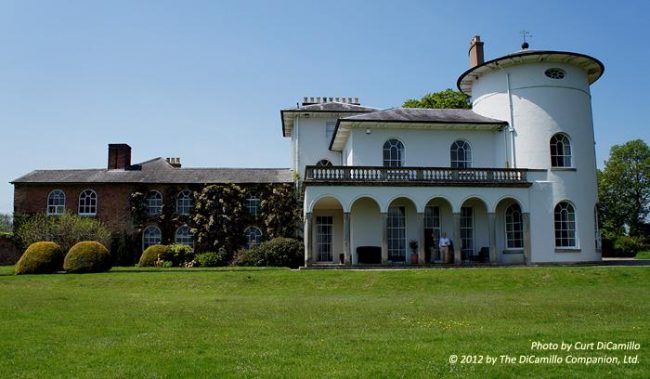
Cronkhill
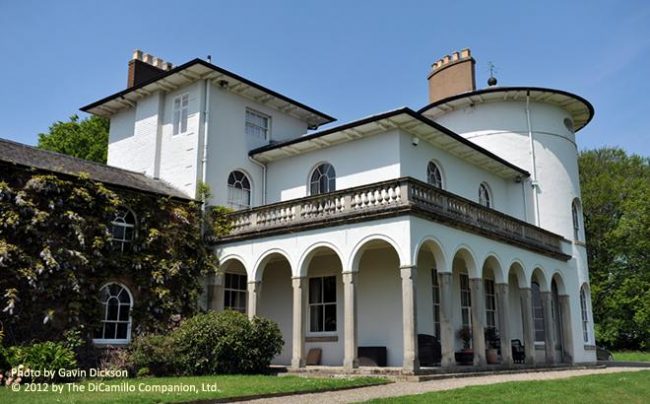
Cronkhill
Earlier Houses: The current house incorporates elements of the earlier Tern Hall.
Built / Designed For: 1st Lord Berwick
House & Family History: This grand Neoclassical house, which today lends its name to the famous Attingham Summer School (founded here in 1952), is the best surviving mansion designed by the Gallic-speaking Scottish architect George Steuart. In his day a rival of Robert Adam, Steuart mastered his refined architectural vocabulary and this stately Shropshire house exemplifies elegance both outside, with its finely cut Grinshill stone masonry, and inside, where ravishingly beautiful plasterwork ornaments the principal rooms' ceilings. Designed for Noel Hill, 1st Lord Berwick, in 1783, the house was internally altered with the creation of a top-lit picture gallery and staircase for his son Thomas, 2nd Lord Berwick. A spendthrift who scandalized respectable society by marrying the courtesan Harriet Wilson's sister, Sophia Dubouchet, Thomas turned to John Nash for his architectural endeavors and to the landscape gardener Humphry Repton to create a setting worthy of the great house. Having undertaken an extensive Grand Tour at his succession, Thomas had many paintings and sculptures to display, and Nash responded with a picture gallery that incorporated the latest technology with curved cast iron cove lights cast just a few miles away at the Darby family's Coalbrookdale Ironworks (this was one of the first top-lighted galleries of its type, a design that would later be adopted by museums around the world). Lord Berwick's spending ran to excess and sales followed, including a 30-day sale in 1827 of the contents of Attingham Park. Although later members of the family refurnished the house, notably Thomas's brother, the 3rd Baron, and his eventual successor, the 8th Lord Berwick, only recently have some of the 2nd Lord Berwick's Regency decorations been uncovered and restored by the National Trust. On the death of the 8th Lord Berwick in 1947, the house, together with 4,000 acres, was given to the National Trust. In Julian Fellowe's 2016 book, "Belgravia," the Brockenhurst family home is based on Attingham. (We are very grateful to Gareth Williams for this history of Attingham Park.)
Collections: Attingham is unusual among English country houses for its collection of Neapolitan art. Formed primarily by the 3rd Lord Berwick, who was British minister (ambassador) at the court of Sardinia for 17 years and minister at the Bourbon court of Naples from 1824 and 1833, the collection is rich in objects associated with the eruption of Mount Vesuvius (the 2nd Lord Berwick even had a working model of the volcano). In 1827 there was a huge sale of the contents of Attingham, which spread the great collection to the winds. A number of lots were purchased by other Shropshire country houses, including furniture that is today in the collection of Onslow Park. Titian's 1562 "The Rape of Europa,” painted for Philip II, King of Spain, was purchased for 700 guineas by Thomas Noel Hill, 2nd Lord Berwick, on December 26, 1798, at the Bryan Orléans Collection sale at the London Lyceum. The 4th Earl of Darnley acquired the Titian at the 1827 Attingham sale for his collection at Cobham Hall, Kent. In June of 1896 Bernard Berenson acquired "The Rape of Europa" from the 6th Earl of Darnley for Isabella Stewart Gardner, who paid $100,000 for the masterwork. The painting is today in the Isabella Stewart Gardner Museum, Boston, where it is acknowledged to be one of the greatest Italian paintings in the United States (see photo in "Images" section). The Regency interiors of Attingham are famous today for their collections of ambassadorial silver, Italian furniture, and Grand Tour paintings. An 18th century Chinese white silk strip painted with designs of flowers that once probably hung in the picture gallery or drawing room at Attingham is today in the collection of the Museum of Fine Arts, Boston.
Comments: Attingham is considered one of the great houses of the Midlands.
Garden & Outbuildings: The house is located within a 200-acre park. Situated on the 4,000-acre Attingham Estate and designed circa 1805 by John Nash (who also designed the park) in the cottage orné style as the home for the 2nd Lord Berwick's agent, Francis Walford, Cronkhill is the first and best-known example of John Nash's Italianate villas. Intended to look like one of the Quattrocento Tuscan farmhouses depicted by Claude Lorraine or Poussin, the design fulfills all of the criteria of the Picturesque movement. The house has an asymmetrical plan, with each of the rooms—library, drawing room, and dining room—enjoying the splendid views across the broad meanders of the River Severn toward the Wrekin, which rises, almost Vesuvius-like, in the distance. Cronkhill complements the views that it enjoys and has changed remarkably little since it was first built. The house is owned by the National Trust and is tenanted, with limited public access. The grounds also contain the deer park, riverside walks, and a woodland sculpture trail. (We are very grateful to Gareth Williams for the history of Cronkhill.) In July of 2024 archaeologists discovered two unknown Roman villas on the Attingham Estate.
Architect: John Adey Repton
Date: UncertainArchitect: John Nash
Date: 1805-07Vitruvius Britannicus: C. New, II, pls. 25-30, 1808.
John Preston (J.P.) Neale, published under the title of Views of the Seats of Noblemen and Gentlemen in England, Wales, Scotland, and Ireland, among other titles: 2.S. Vol. III, 1826.
Country Life: XLIX, 158 plan, 186, 1921. CXVI, 1350, 1954.
Title: Treasure Houses of Britain, The - SOFTBACK
Author: Jackson-Stops, Gervase (Editor)
Year Published: 1985
Reference: pg. 265
Publisher: Washington, DC: National Gallery of Art (New Haven: Yale University Press)
ISBN: 0300035530
Book Type: Softback
Title: Biographical Dictionary of British Architects, 1600-1840, A - SOFTBACK
Author: Colvin, Howard
Year Published: 1995
Reference: pg. 805
Publisher: New Haven: Yale University Press
ISBN: 0300072074
Book Type: Softback
Title: Debrett's Peerage and Baronetage, 1990
Author: Kidd, Charles; Williamson, David (Editors)
Year Published: 1990
Reference: pg. B 963
Publisher: London: Debrett's Peerage Limited (New York: St. Martin's Press, Inc.)
ISBN: 0312046405
Book Type: Hardback
House Listed: Grade I
Park Listed: Grade II*
Past Seat / Home of: SEATED AT EARLIER HOUSE: Sir Rowland Hill, 16th century. SEATED AT CURRENT HOUSE: Noel Hill, 1st Baron Berwick, 1785-89; Thomas Noel-Hill, 2nd Baron Berwick, 1789-1832; William Noel-Hill, 3rd Baron Berwick, 1832-42; Richard Noel-Hill, 4th Baron Berwick, 1842-48; Richard Noel Noel-Hill, 5th Baron Berwick, 1848-61; William Noel-Hill, 6th Baron Berwick, 1861-82; Richard Henry Noel-Hill, 7th Baron Berwick, 1882-97; Thomas Henry Noel-Hill, 8th Baron Berwick, 1897-1947 (the barony became extinct in 1953).
Current Ownership Type: The National Trust
Primary Current Ownership Use: Visitor Attraction
Ownership Details: The cottage orné, Cronkhill, is open to the public on a limited basis.
House Open to Public: Yes
Phone: 01743-708-162
Fax: 01743-708-155
Email: [email protected]
Website: https://www.nationaltrust.org.uk
Historic Houses Member: No